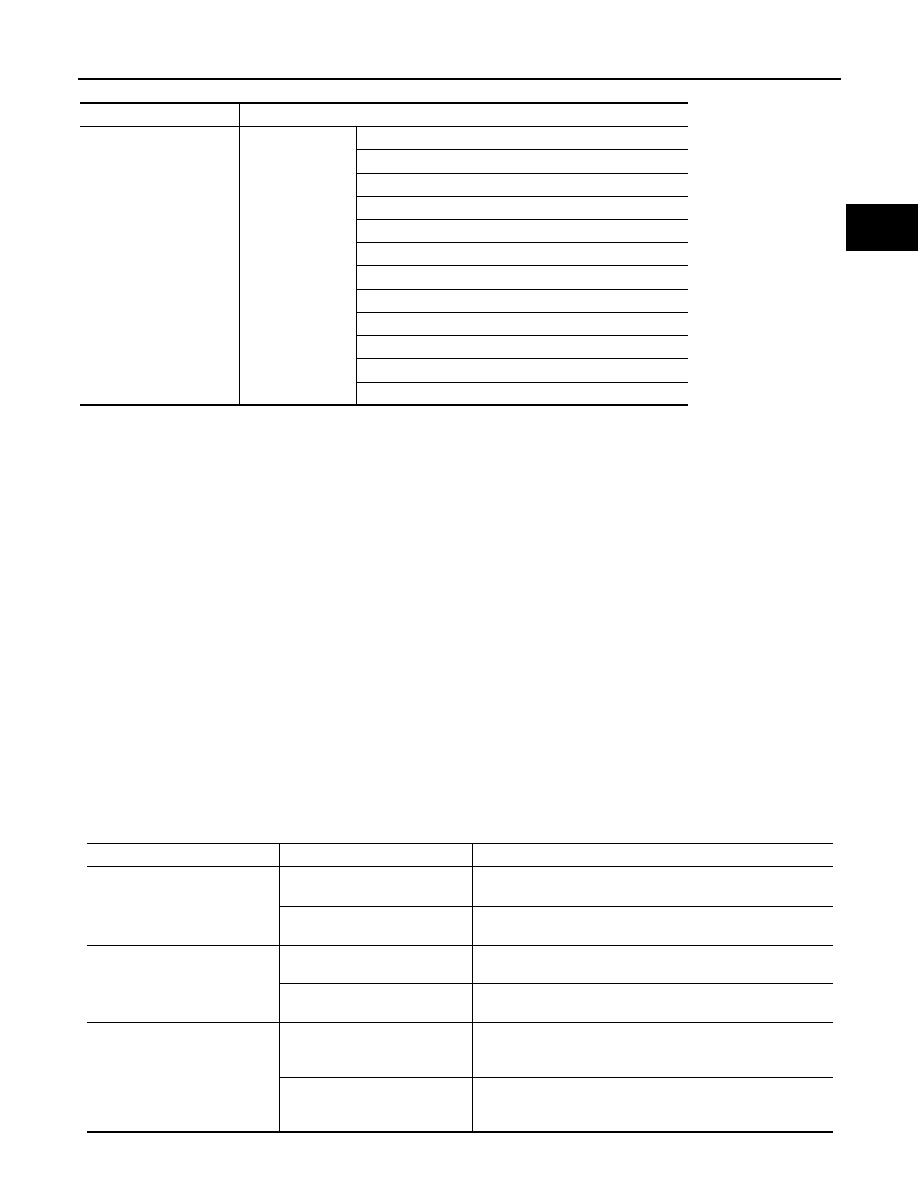Nissan Leaf. Manual - part 435

SYSTEM
EVB-23
< SYSTEM DESCRIPTION >
D
E
F
G
H
I
J
K
L
M
A
B
EVB
N
O
P
DESCRIPTION
The Li-ion battery controller (LBC) monitors the status of the inside of the Li-ion battery at all times and sends
information, such as the charging status of Li-ion battery and possible power, to VCM (vehicle control module)
via EV system CAN communication.
The Li-ion battery controller performs control as per the following.
• Monitors the battery state and transfers chargeable/dischargeable power to VCM to prevent an error, such
as overvoltage, over discharge or excessive temperature rise in the battery.
• Detects an error (overvoltage, over discharge, overcurrent, or excessive temperature rise) immediately at
the time of error occurrence and requests VCM to disconnect the system main relay to interrupt the dis-
charge/charge line.
• Maintains the optimum battery state constantly with a cell capacity adjustment function to prevent a reduc-
tion in charging/discharging capacity caused by cell capacity variations.
• Detects the connector fit state with the function to detect the fit of the high voltage harness connector and
transfers the detected state to VCM so that the vehicle does not start with an unsteady state.
• Detects the insulation resistance state with the function to detect the insulation resistance between high and
low voltage and transfers the detected state to VCM so that the vehicle does not start with an unusual state.
• Estimates a battery charge state and low battery state, based on the data obtained with the battery state
detection function, and reflects on the battery capacity meter.
BATTERY PROTECTION
The Li-ion battery has a voltage range capable of charge/discharge. If charged/discharged exceeding the
range, excessive low capacity or malfunction may be caused. To prevent this, the Li-ion battery controller
detects voltage of each cell and requests the control of charging/discharging energy to VCM so that the cell
voltage stays within the voltage range.
Received unit
Signal name
VCM
EV system CAN
High voltage discharge permit signal
Li-ion battery main relay cut request signal
Li-ion battery connector interlock signal
Li-ion battery voltage signal
Li-ion battery current signal
Li-ion battery chargeable power signal
Li-ion battery dischargeable power signal
Li-ion battery chargeable completion signal
Li-ion battery available charge signal
Li-ion battery capacity signal
Li-ion battery gradual capacity loss signal
Insulation resistance signal
Control item
Control
Operating condition
Overvoltage/overcurrent protec-
tion
Charging energy control
Gradual control of charging energy as the cell voltage ap-
proaches the upper limit of the voltage capable of charging.
System main relay cut
Cell voltage exceeds the voltage judged as overvoltage and
maintains the voltage for more than the specified time.
Over discharge protection
Discharging energy control
Gradual control of discharging energy as the cell voltage ap-
proaches the lower limit of the voltage capable of discharging.
System main relay cut
Cell voltage exceeds the voltage judged as over discharge and
maintains the voltage for more than the specified time.
Excessive temperature rise pro-
tection
Charging/discharging energy
control
Gradual control of charging/discharging energy as Li-ion bat-
tery temperature approaches the upper limit of the temperature
capable of use.
System main relay cut
Li-ion battery temperature exceeds the temperature judged as
excessive temperature rise and maintains the temperature for
more than the specified time.